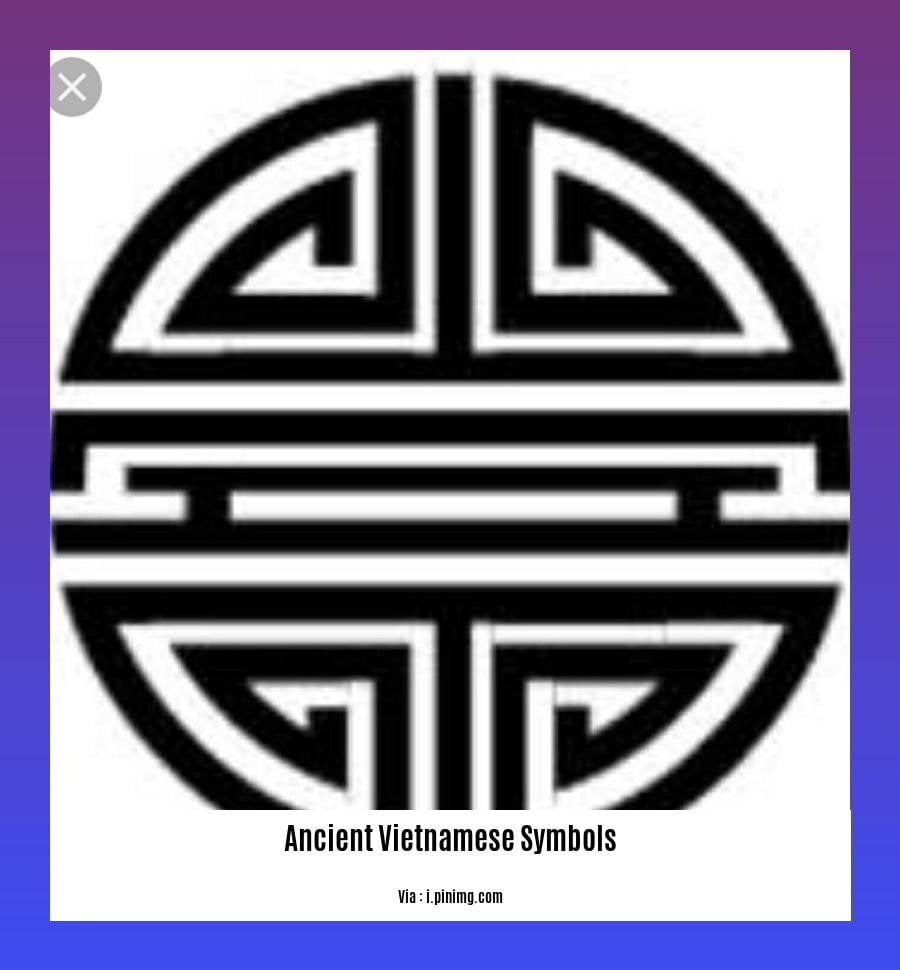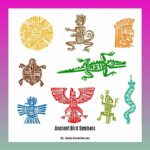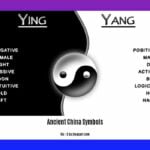Unveiling the Enigmatic World of Ancient Vietnamese Symbols: A Journey Through History and Symbolism. Embark on a captivating exploration of Vietnam’s rich cultural tapestry through its bronze drums and gongs, the iconic conical hat, the elegant Ao dai, and the enduring symbol of rice fields. Discover the profound meanings embedded within these symbols, revealing the stories of ancient Vietnamese society and its lasting legacy.
Key Takeaways:
Vietnamese culture is rich in symbols with deep meanings.
The lotus flower symbolizes purity and resilience, often depicted rising from adversity.
The banyan tree represents strength and longevity.
The dragon symbolizes royalty, power, and prosperity, sometimes associated with the fourfold deity of clouds, rain, thunder, and lightning.
The turtle embodies wisdom and longevity.
Ancient Vietnamese Symbols
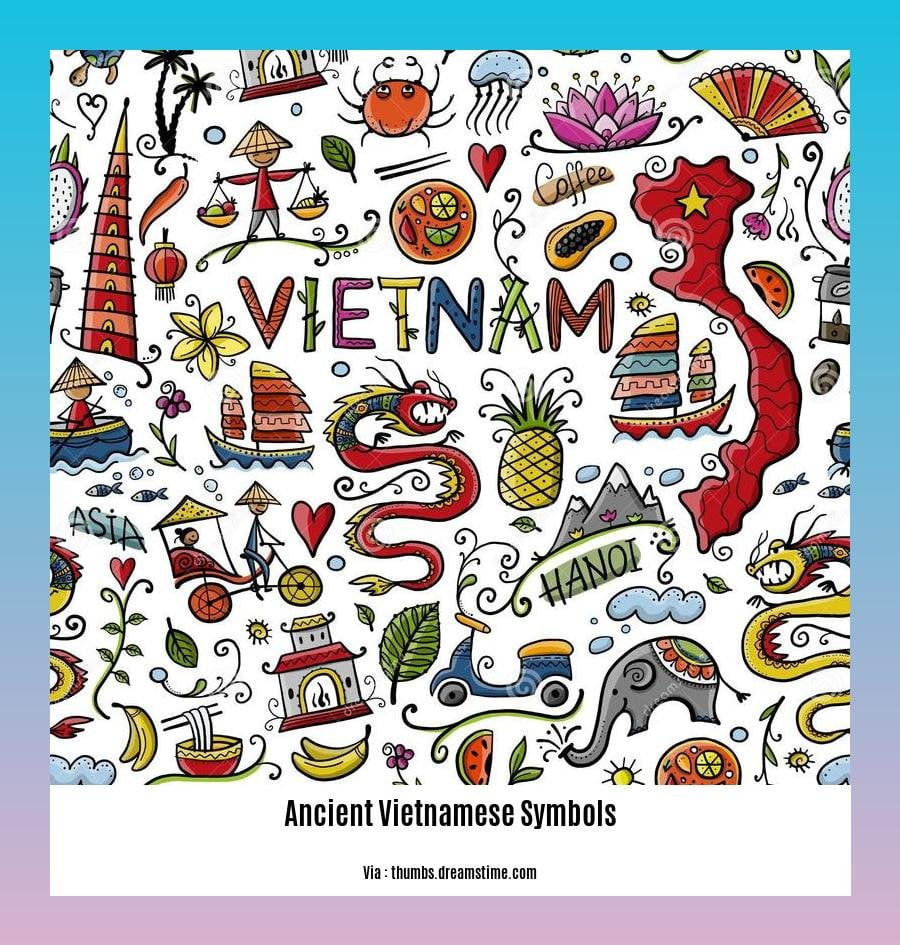
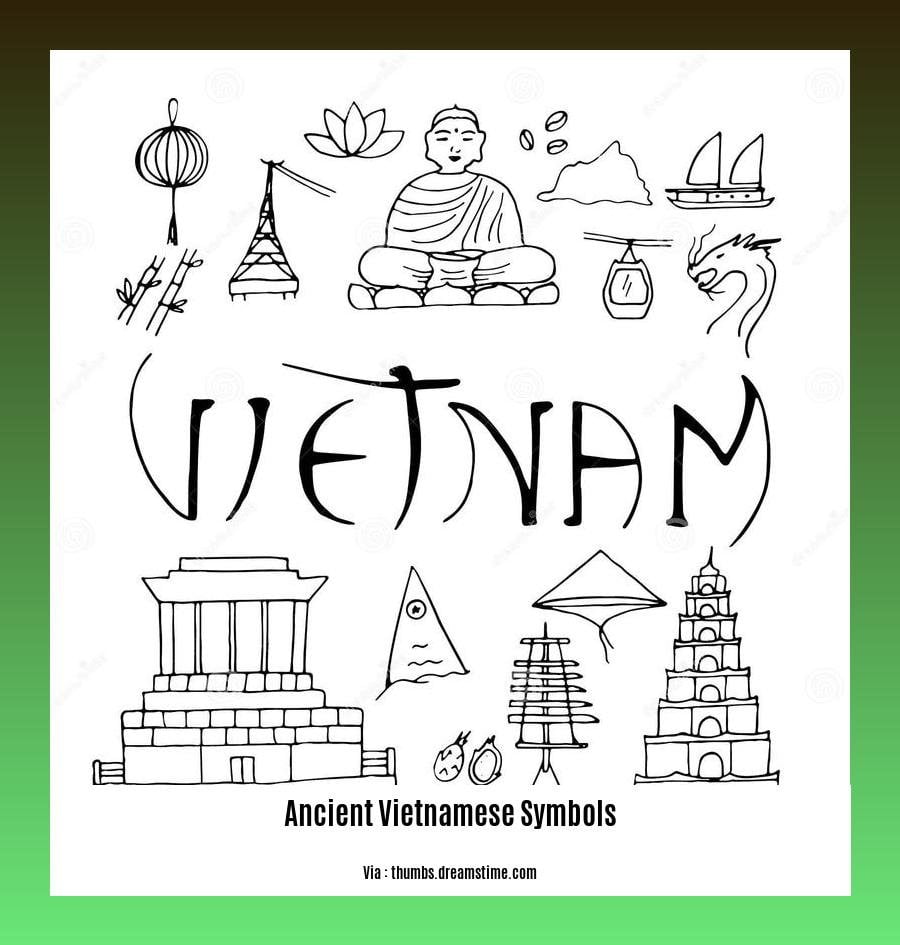
Ancient Vietnamese symbols hold profound meanings, offering glimpses into the nation’s rich history and diverse culture. These symbols often draw inspiration from nature, mythology, and everyday life, embodying deep-rooted beliefs and values. Let’s embark on a journey to decode these enigmatic symbols and uncover their fascinating stories.
The Lotus: A Symbol of Perseverance
Vietnam’s national flower, the lotus, is a symbol of resilience and purity. Its ability to rise from muddy waters and bloom beautifully represents overcoming adversity and maintaining inner peace amidst life’s challenges. The lotus is often depicted in art, literature, and architecture as a symbol of hope and spiritual enlightenment.
Banyan Tree: Strength and Longevity
The banyan tree symbolizes strength, longevity, and protection in Vietnamese culture. Its massive roots and expansive canopy provide shelter and sustenance to various forms of life, representing the interconnectedness of all living beings. The banyan tree is often planted near temples, pagodas, and communal spaces as a symbol of stability and harmony.
The Dragon: A Symbol of Power and Prosperity
Dragons hold a prominent place in Vietnamese mythology and symbolism. They represent royalty, power, and prosperity, often associated with the fourfold deity of clouds, rain, thunder, and lightning. Dragons are commonly depicted in art, architecture, and traditional ceremonies as symbols of good luck, fortune, and protection.
The Turtle: Wisdom and Longevity
The turtle is a symbol of wisdom, longevity, and stability in Vietnamese culture. Its slow and steady nature represents the importance of patience and perseverance. The turtle is often depicted carrying the world on its back, symbolizing the vastness and complexity of the universe. It is also associated with the concept of reincarnation and the cycle of life and death.
Conclusion
Ancient Vietnamese symbols are a testament to the country’s rich cultural heritage and profound belief systems. These symbols not only add beauty and depth to Vietnamese art and architecture but also serve as reminders of the nation’s history, values, and aspirations. As we continue to explore and appreciate these symbols, we gain a deeper understanding of Vietnam’s unique identity and its enduring legacy.
Delve into the fascinating world of ancient symbols and discover the Viking’s rich heritage through the lens of ancient viking symbols.
Indulge in the ancient vines zinfandel, a testament to the centuries-old winemaking traditions and flavors.
Explore the history of ancient hymns and their influence on modern music through the enlightening ancient words hymn history.
3. The Ao dai – Traditional Vietnamese Dress
The Ao dai, an epitome of Vietnamese cultural heritage, is a long, flowing tunic that has captivated the world with its elegance and symbolism. Let’s delve into the history, modern styles, and significance of this timeless attire.
Key Takeaways:
The Ao dai originated in the 18th century during the reign of Lord Nguyen Phuc Khoat, evolving into its current two-part style in the early 20th century. (vietnam.travel)
Today, the Ao dai boasts various styles, from boat necks to cropped lengths, showcasing the creativity of modern designers. (asiahighlights.com)
The Ao dai is a versatile attire, suitable for formal and special occasions, exuding elegance and grace. (vietnam.travel)
Whether custom-made by skilled tailors or purchased ready-made, the Ao dai is available in diverse sizes, styles, and colors. (vietnam.travel)
Colors play a significant role in the symbolism of the Ao dai, with gold representing royalty and red symbolizing happiness and prosperity. (vietnam.travel)
The Ao dai transcends mere fashion; it embodies Vietnamese cultural identity, showcasing beauty, grace, and a deep connection to tradition. Whether you adorn it for a special occasion or simply admire its presence in art and photography, the Ao dai continues to captivate hearts and inspire minds.
4. Rice fields – the country’s emblem
Rice fields, a timeless emblem of Vietnam’s agricultural heritage, are deeply woven into the country’s identity. These emerald expanses not only nourish the nation but also symbolize its resilience, hard work, and unity.
Key Takeaways:
- Vietnam’s rice fields are iconic, representing the backbone of the nation’s agricultural prowess and its people’s resilience.
Rice cultivation in Vietnam dates back centuries, with the Mekong Delta serving as the country’s rice basket. These vast paddies, teeming with life and sustenance, mirror the industry and dedication of Vietnamese farmers.
The symbolism of rice fields extends beyond mere sustenance. These fields embody the unity and cooperation among Vietnamese people. Just as the rice plants stand tall together, so do the Vietnamese people, supporting one another through thick and thin.
Rice, a staple in Vietnamese cuisine, is more than just a food source. It’s a symbol of life, growth, and prosperity. Its presence in Vietnamese art, literature, and folklore underscores its cultural significance.
The preservation of rice fields is essential, not just for food security but also for preserving Vietnam’s heritage. These fields are a living testament to the country’s agricultural roots and the enduring spirit of its people.
References:
- Symbols of Vietnam Culture Throughout History
- Vietnamese Culture Symbols and Color Meanings
FAQ
Q1: What is the significance of bronze drums and gongs in ancient Vietnamese culture?
Q2: How has the conical hat (nón lá) evolved over time in Vietnamese society?
Q3: What are the different styles and variations of the Ao dai, and when should it be worn?
Q4: Why are rice fields considered an emblem of Vietnam, and what role do they play in the country’s history and culture?
Q5: What are the symbolic meanings associated with the various colors used in Ao dai?
- Califon Borough, NJ: A Small Town with a Big Heart (and Rich History) - November 22, 2024
- London Aquatics Centre: Dive into Olympic History and World-Class Facilities - November 22, 2024
- Legalize Marinara: How a Sauce Became a Symbol (and a Side of Social Commentary) - November 22, 2024
